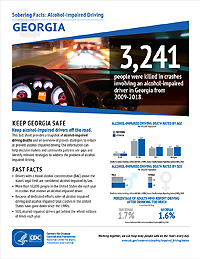What Works: Strategies to Increase Restraint Use
The strategies in this section are effective for increasing seat belt, car seat, and booster seat use. They are recommended by The Guide to Community Preventive Services and/or have been demonstrated to be effective in reviews by the National Highway Traffic Safety Administration.* Different strategies may require different resources for implementation or have different levels of impact. Find strategies that are right for your state.
Strategies to Increase Seat Belt Use
Primary Seat Belt Laws
Primary seat belt laws allow police officers to stop and ticket someone for not buckling up. On average, in both rural and urban communities, primary seat belt laws result in higher rates of seat belt use and fewer crash deaths than secondary seat belt laws. Secondary laws allow officers to give tickets only if they have pulled drivers over for another reason. Seat belt laws are most effective when they cover occupants in all seats of the vehicle.
Increased Penalties
Increased penalties for violating seat belt laws may include higher fines or points on a driver’s license.
Short-term, High-visibility Enforcement
Short-term, high-visibility enforcement of seat belt laws, such as Click It or Ticket, involves a brief period of increased police efforts (e.g., checkpoints or saturation patrols). These efforts are highly publicized through a mass media campaign that mixes both earned media coverage and paid advertisements. Combining law enforcement and media coverage is particularly effective for reaching people who are known to have lower rates of seat belt use, such as men, teens, and young adults.
Integrated Nighttime Enforcement Programs
Integrated nighttime enforcement programs are short-term, highly visible enforcement strategies. They are conducted at night, when seat belt use is lowest and crashes are most common. They are combined with enforcement of other laws, such as impaired driving laws. Combining these strategies can help law enforcement use limited funding and resources for the greatest public safety impact.
Strategies to Increase Car Seat and Booster Seat Use
Child Restraint Laws
Child restraint laws require children riding in a car to use approved restraint devices (car seats, booster seats, or seat belts) appropriate for their weight, height, and age. Strengthening current laws with booster seat provisions that require children who have outgrown car seats to use booster seats until at least age 9 helps reduce injuries and deaths.
Enhanced Enforcement
Enhanced enforcement programs for child passenger safety are similar to those used for seat belt use (see above). Effective programs are short-term, highly visible in the community, and advertised widely in the media.
Distribution Plus Education Programs
Distribution plus education programs help parents and caregivers obtain new, unused car seats and learn how to properly use and install them. These programs often include hands-on demonstrations, which can help increase proper use and installation.
Incentive and Education Programs
Incentive and education programs reward parents or children with coupons or other prizes for correctly using car seats. Programs offer print materials, videos, or other instructional aids for parents and caregivers.
*Sources
The Guide to Community Preventive Services (The Community Guide), Motor Vehicle-Related Injury Prevention, at www.thecommunityguide.orgexternal icon, and National Highway Traffic Safety Administration. (2018). Countermeasures that work: a highway safety countermeasures guide for State Highway Safety Offices, Ninth edition, at www.nhtsa.gov/sites/nhtsa.dot.gov/files/documents/812478_countermeasures-that-work-a-highway-safety-countermeasures-guide-.pdfpdf iconexternal icon.
Working together, we can help keep people safe on the road – every day. Encourage drivers and passengers to buckle up on every trip.
Fact sheets are available for each state and the District of Columbia and include national and state data on restraint use and occupant crash deaths, as well as an overview of proven strategies for increasing the use of seat belts, car seats, and booster seats.
